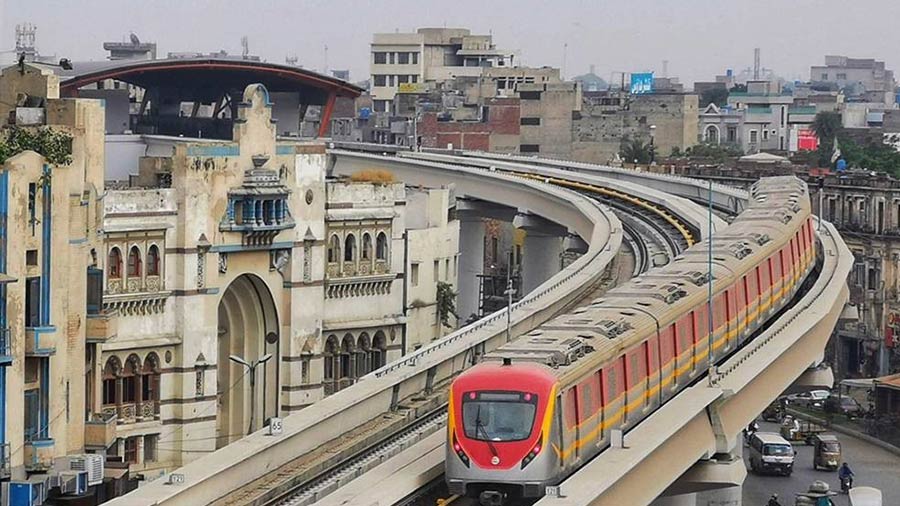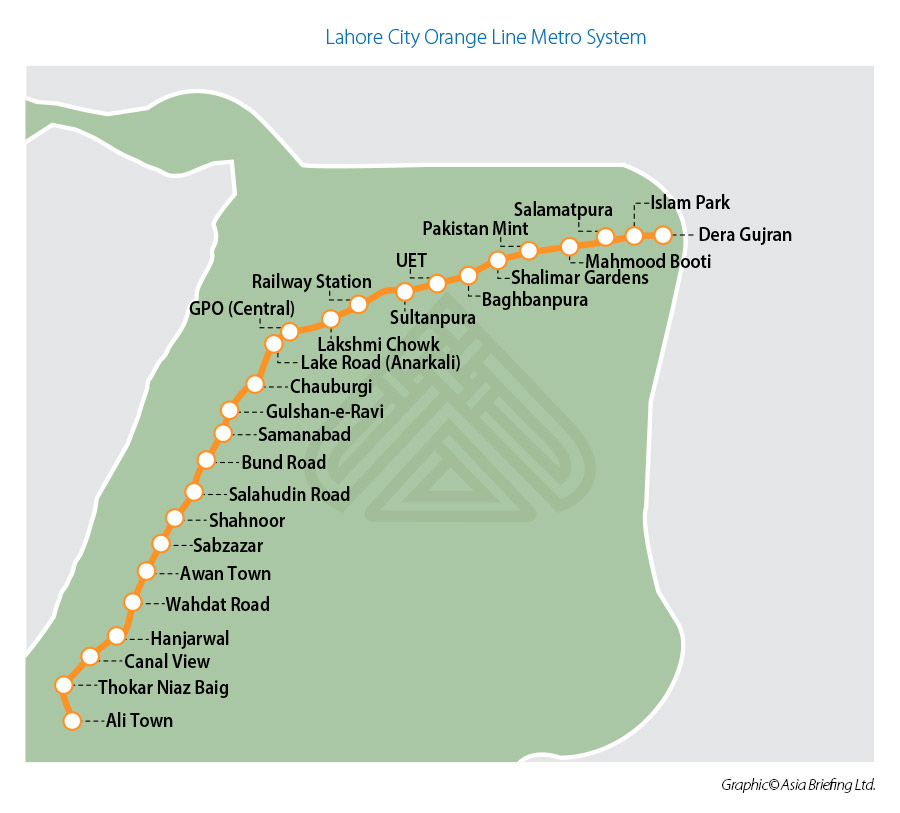Pakistan’s Lahore Opens Its First Metro Line As CPEC Starts To Deliver
 Pakistan opened its first metro line in Lahore this week, the Orange Line Metro being funded in part by Chinese investment under the CPEC project. The Metro is the first large-scale technologically advanced rail transit project in Pakistan, stretches 27 kilometres and has 26 stations. The metro cost more than 300 billion rupees (US$1.8 billion) with authorities expecting about 250,000 passengers will use the metro system daily. That’s roughly equivalent to the usage of Japan’s Sendai Metro, the Rotterdam Metro or New York Cities PATH line.
Pakistan opened its first metro line in Lahore this week, the Orange Line Metro being funded in part by Chinese investment under the CPEC project. The Metro is the first large-scale technologically advanced rail transit project in Pakistan, stretches 27 kilometres and has 26 stations. The metro cost more than 300 billion rupees (US$1.8 billion) with authorities expecting about 250,000 passengers will use the metro system daily. That’s roughly equivalent to the usage of Japan’s Sendai Metro, the Rotterdam Metro or New York Cities PATH line.
Lahore is on Pakistan’s south coast with access to the Indian Ocean, and is the country’s second largest city after Karachi. It is the 18th largest city in the world and one of Pakistan’s wealthiest cities with an estimated GDP of US$65.14 billion (PPP) as of 2017, making it equivalent in wealth terms to Helsinki, Leeds, Naples or Auckland.
The Punjab provincial government arranged a 162 billion rupee (US$972 million) soft loan with China’s Exim Bank to help fund the project.
The Orange Line cuts travel time across Lahore from two-and-a-half hours by bus to 45 minutes on the metro. Lahore is a city of more than 11 million, where commuters frequently spend hours in cars or buses daily due to grinding traffic. Punjab province Chief Minister Sardar Usman Buzdar, Transport Minister Jahanzeb Khan Khichi and Chinese Consul General Long Dingbin jointly inaugurated the project on Monday (October 26).
“This project will provide world-class facilities to the public in Lahore” Buzdar said during the inauguration ceremony. “This is the first state-of-the-art rail project in the country which has been successfully launched. This project has given a new dimension to Pakistan-China friendship as the CPEC project is the best example of partnership between Pakistan and China.” Khichi said.
The line runs for 27·1 km serving 26 stations on a mostly-elevated alignment, with a 1·7 km tunnelled section in the city centre. Starting from Ali Town in the southwest it follows Multan Road to reach underground stations at Anarkali Bazaar and Central, then runs via the main line station and east along Grand Trunk Road to Dera Gujran.

China’s CRRC Zhouzhou has supplied a fleet of 27 five-car Type B trainsets, with a further 27 expected to arrive by 2025. The trains are maintained at North depot, beyond the eastern terminus at Dera Gujran, and a stabling yard has also been provided at Ali Town. Traction power is from a 750 V DC third-rail supply. The trains are expected to operate at up to 80 km/h, offering an end-to-end commercial speed of nearly 35 km/h.
Two further lines are currently being planned. The Blue Line would run south from Chauburji on the Orange line for 24 km serving 22 stations, whilst the 32 km northwest-southeast Purple Line with 20 stations would serve the city’s international airport.
See Also: Belt & Road CPEC Projects In Pakistan That Investors Should Be Looking At
About Us
Silk Road Briefing is written by Dezan Shira & Associates. The firm has 28 offices throughout Asia, and assists foreign investors into the region. For strategic advisory and business intelligence issues please contact the firm at silkroad@dezshira.com or visit www.dezshira.com





